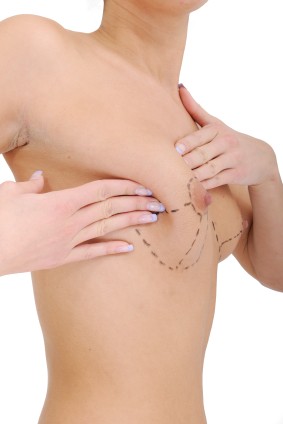 In this modern world of enhancements, silicone breast implants and breast enlarging pills are common solutions to a better figure.
In this modern world of enhancements, silicone breast implants and breast enlarging pills are common solutions to a better figure.
In as much as breast augmentation is a popular operation among the female population, a surgical procedure has to be done on some women at the opposite end who are troubled by overly endowed chests, through reduction breast surgery or reduction mammoplasty.
A large bust can work to one’s disadvantage and cause back pain. It can restrict an individual’s physical activity and cause skin irritation beneath the breasts.
If you are suffering from any of these due to pendulous breasts, breast reduction surgery may be an option for you.
Benefits of having a Breast Reduction
Having modest-sized breasts affords you the comfort to move around freely without the excess baggage on your chest. Pain, skin irritations, and breathing difficulties aggravated by the heavy weight of the breasts will be relieved.
You will have an easier time fitting into fashionable clothes and will have a more balanced bodily shape, bringing out a boosted self confidence.
Who could undergo Reduction Breast Surgery?
Although it could be performed at any age, it is generally advised to delay the breast reduction surgery until you have reached full development of the breasts after teenage years. You are qualified to undergo the procedure if you are:
• 18 years old and above
• In excellent health condition
• Have realistic expectations and are psychologically stable
• Not pregnant or breastfeeding
• Men with gynaecomastia (abnormal enlargement of the breasts)
Precautions
If you have any of the following conditions, you may have to think twice about having breast reduction surgery:
• Infections around the breast area
• Breast cancer
• Poorly-controlled diabetes mellitus
• Have bleeding or clotting problems
How is the Surgery done?
The breast reduction surgery will be done under general anaesthesia. The anchor-incision type is most commonly employed, circling the areola and extending vertically down towards the crease beneath the breast.
Removal of the excess breast tissues, fat and skin follows, after which the nipple and remaining tissues are repositioned to a higher location. The areola could also be decreased in size if the patient wishes.
Small tubes to drain blood may remain and be due for removal after 2 days. Incisions will be sutured. Breast reduction surgery may take around 2- 4 hours, depending upon the patient factors and extent of the procedure.
During Recovery
Your breasts will be bandaged for support for 1 to 2 days. After removal, you will be required to wear a surgical bra for a week or two. Expect some considerable swelling and bruising, which will subside in 2 to 3 weeks.
You may resume work after 2 weeks but strenuous activities must be avoided for at least 6 weeks. If you are a smoker, it will be best for you to quit the habit a few months before and after the surgery to avoid delays in healing and the development of scars.
Possible Risks
There will always be complications to consider in any surgery. Noteworthy among these is the loss of nipple sensation due to the change of location of the nipple, affecting its innervations.
Others risks of breast reduction surgery may include uneven results, infections, anaesthesia-related risks, excessive bleeding, and scars. If you intend to breastfeed in the future, inform your plastic surgeon about this so techniques will be used to avoid disrupting the breastfeeding process later on.
Cost of Reduction Breast Surgery
Insurance may sometimes be available for breast reduction surgery. If not, the average cost of $5,000 would include hospital fees, anaesthesia, surgeon’s fees and the surgery itself.
The rate may vary, depending upon your geographical location, credentials of the cosmetic surgeon and the complexity of the breast reduction surgery. You can inquire at your local clinic regarding financing options or insurance coverage details.
